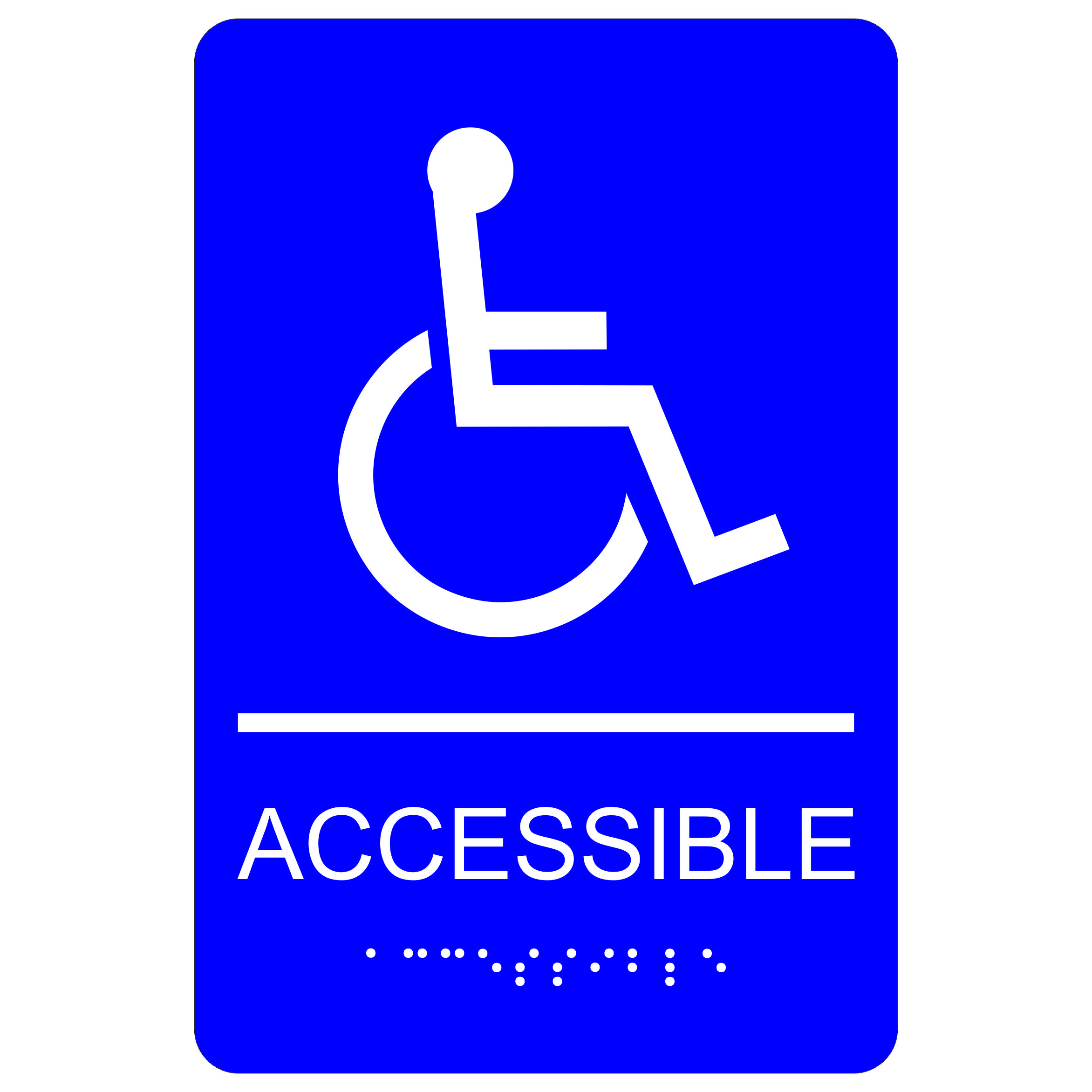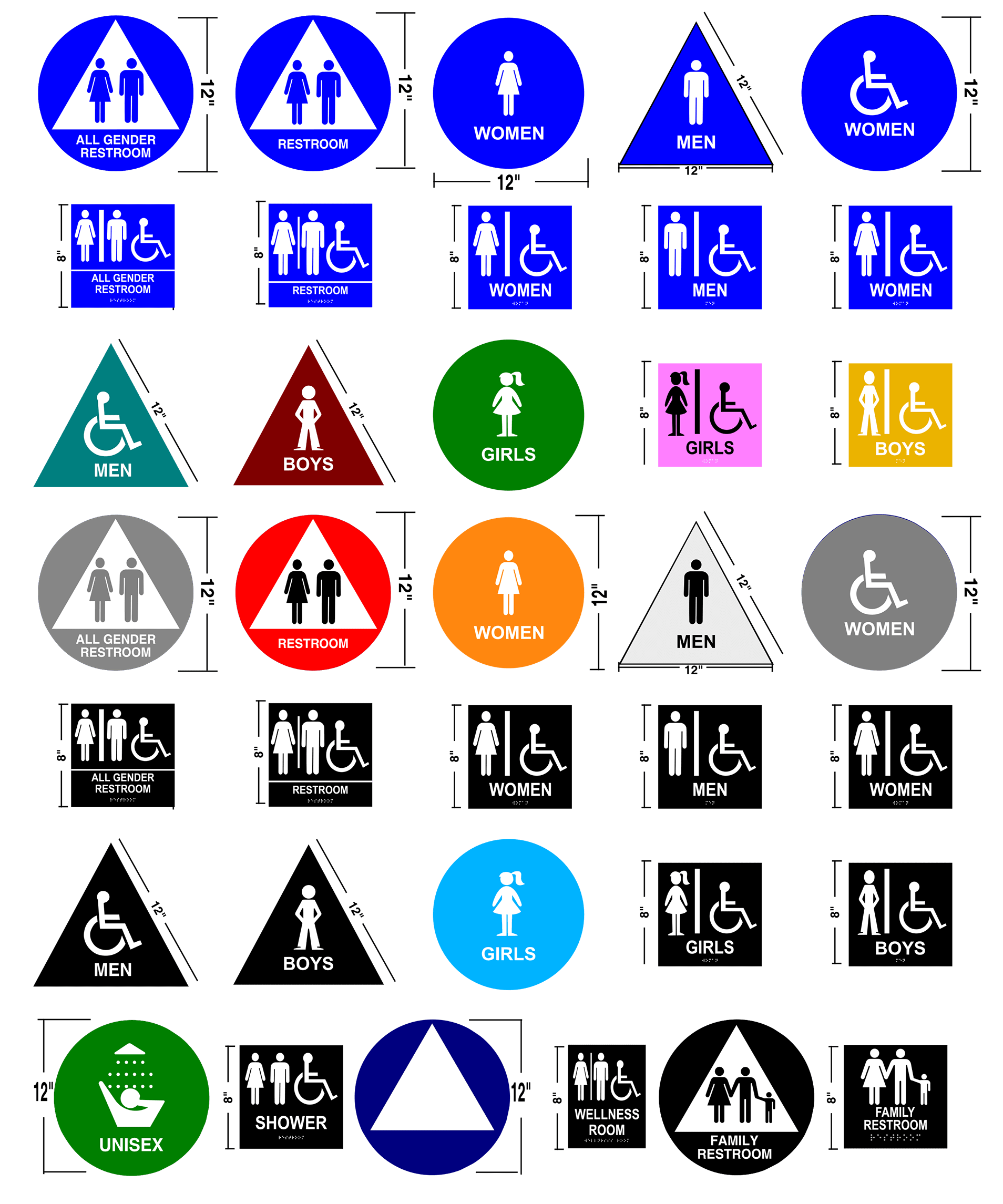Checking Out the Secret Features of ADA Indicators for Boosted Ease Of Access
In the realm of accessibility, ADA indications work as quiet yet effective allies, making certain that spaces are navigable and inclusive for people with handicaps. By integrating Braille and tactile components, these signs damage obstacles for the aesthetically damaged, while high-contrast color pattern and readable font styles provide to diverse visual needs. Furthermore, their calculated positioning is not approximate however instead a computed effort to promote seamless navigating. Beyond these attributes lies a much deeper narrative about the evolution of inclusivity and the ongoing commitment to producing fair rooms. What more could these indications signify in our pursuit of universal availability?
Value of ADA Conformity
Making sure conformity with the Americans with Disabilities Act (ADA) is essential for fostering inclusivity and equivalent accessibility in public rooms and workplaces. The ADA, enacted in 1990, mandates that all public facilities, employers, and transportation solutions suit individuals with handicaps, ensuring they delight in the very same rights and possibilities as others. Conformity with ADA standards not only meets lawful commitments however additionally boosts a company's online reputation by demonstrating its dedication to variety and inclusivity.
One of the essential facets of ADA compliance is the execution of obtainable signs. ADA signs are created to make sure that people with handicaps can easily navigate via spaces and buildings.
Moreover, adhering to ADA policies can alleviate the risk of legal consequences and potential fines. Organizations that fall short to abide by ADA guidelines might deal with legal actions or fines, which can be both monetarily troublesome and destructive to their public photo. Thus, ADA compliance is important to cultivating an equitable atmosphere for everybody.
Braille and Tactile Aspects
The consolidation of Braille and responsive aspects right into ADA signs personifies the concepts of ease of access and inclusivity. It is normally positioned beneath the matching message on signs to make certain that people can access the info without aesthetic assistance.
Responsive elements expand past Braille and consist of elevated signs and characters. These elements are designed to be noticeable by touch, enabling individuals to identify room numbers, restrooms, departures, and other important locations. The ADA establishes certain standards concerning the size, spacing, and placement of these responsive components to maximize readability and ensure consistency throughout different atmospheres.

High-Contrast Color Design
High-contrast color pattern play an essential role in boosting the exposure and readability of ADA signage for individuals with aesthetic impairments. These plans are necessary as they take full advantage of the difference in light reflectance between text and history, making certain that signs are conveniently discernible, even from a range. The Americans with Disabilities Act (ADA) mandates using specific color contrasts to suit those with minimal vision, making it a crucial facet of compliance.
The effectiveness of high-contrast colors hinges on their capacity to stick out in various illumination conditions, consisting of poorly lit settings and locations with glow. Typically, dark text on a light background or light message on a dark background is utilized to accomplish optimum contrast. For example, black click this site text on a white or yellow background offers a stark aesthetic difference that helps in fast acknowledgment and understanding.

Legible Fonts and Text Dimension
When thinking about the design of ADA signage, the option of readable typefaces and appropriate text size can not be overstated. These components are critical for guaranteeing that indicators are available to individuals with aesthetic problems. The Americans with Disabilities Act (ADA) mandates that typefaces must be sans-serif and not italic, oblique, script, very ornamental, or of unusual form. These requirements help make sure that the text is quickly readable from a range and that he has a good point the characters are distinct to diverse audiences.
According to ADA standards, the minimal message height should be 5/8 inch, and it must enhance proportionally with seeing range. Uniformity in text size contributes to a natural aesthetic experience, assisting people in navigating settings successfully.
In addition, spacing between letters and lines is indispensable to clarity. Appropriate spacing prevents characters from showing up crowded, enhancing readability. By sticking to these criteria, developers can substantially improve ease of access, ensuring that signs serves its desired function for all people, despite their visual abilities.
Efficient Placement Techniques
Strategic placement of ADA signs is vital for optimizing access and guaranteeing compliance with legal standards. ADA standards stipulate that indicators should be mounted at an elevation in between 48 to 60 inches from the ground to guarantee they are within the line of sight for both standing and seated people.
Additionally, indicators should be put nearby to the lock side of doors to permit very easy recognition prior to entrance. This placement helps individuals find rooms and spaces without obstruction. In instances where there is no door, indications ought to be situated on the nearby surrounding wall surface. Consistency in sign positioning throughout a center improves predictability, minimizing confusion and boosting overall individual experience.

Final Thought
ADA indications play an important duty in advertising availability by incorporating functions that resolve the requirements of people with disabilities. These components jointly foster an inclusive atmosphere, highlighting the relevance of ADA compliance in guaranteeing equivalent accessibility for all.
In the realm of accessibility, ADA signs serve as silent yet effective allies, making sure that rooms are inclusive and navigable for individuals with specials needs. The ADA, passed in 1990, mandates that all public facilities, companies, and transportation solutions accommodate people with impairments, guaranteeing they take pleasure in the exact same rights and chances as others. ADA Signs. ADA signs are created to make sure that people with handicaps can quickly navigate with rooms and buildings. ADA standards state read the full info here that indications need to be mounted at a height between 48 to 60 inches from the ground to ensure they are within the line of view for both standing and seated people.ADA signs play an important function in advertising accessibility by integrating attributes that address the needs of individuals with specials needs